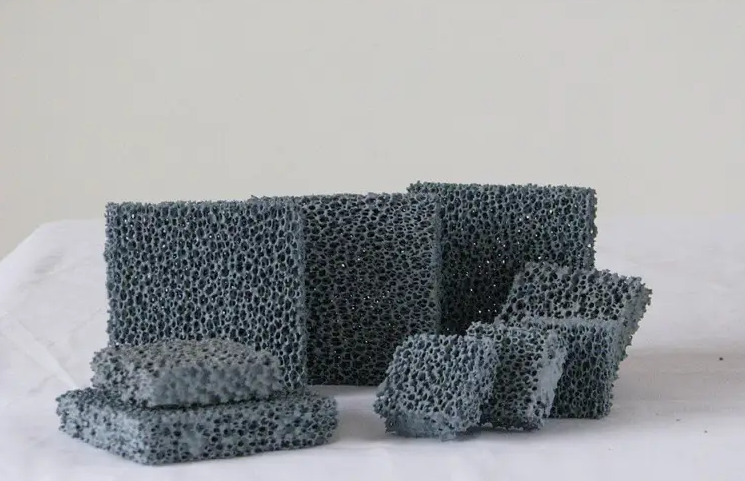Silicon carbide foam ceramics were prepared by using aluminum dihydrogen phosphate as binder and silicon carbide micro powder as aggregate at a low temperature of 800℃. The effects of aluminum dihydrogen phosphate content, solid phase content and elevated temperature treatment on linear shrinkage, bulk density, flexural strength, porosity and microstructure of SIC foam ceramics were studied. The evolution mechanism of structure and properties of SIC foam ceramics at elevated temperature was revealed.

The results show that the shrinkage of silicon carbide ceramic foam filter prepared at low temperature is less than 1%, the linear shrinkage decreases with the increase of solid phase content, and the bulk density and flexural strength increase with the increase of aluminum dihydrogen phosphate and solid phase content. The linear shrinkage, volume density and flexural strength of sic foams prepared at low temperature decreased first and then increased with the increase of temperature, while the porosity increased first and then decreased with the increase of temperature. At 1000℃, the flexural strength of sic foams reached (2.06±0.10)MPa.
Silicon carbide foam ceramics are bonded by type A and B Al(PO3)3 at low temperature. With the increase of treatment temperature, type B Al(PO3)3 is gradually transformed to type A. With the additional increase of temperature, type A Al(PO3)3 is gradually decomposed into Al PO4 phase, and the silicon carbide micro powder is wrapped and bonded.